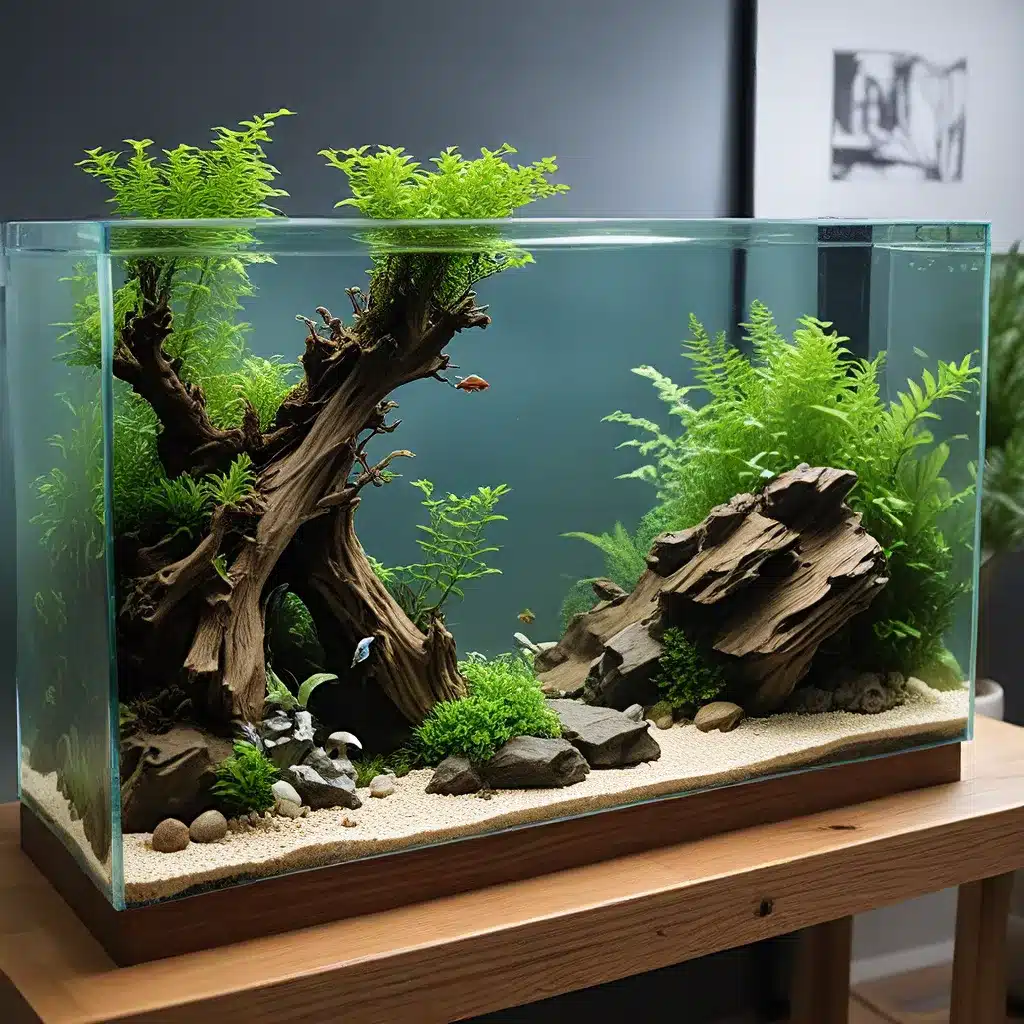
Embracing Nature’s Design Principles
When it comes to aquascaping, the aquarium hobby has long been enamored with the art of crafting visually stunning underwater landscapes. From meticulously arranged rocks and plants to the strategic placement of driftwood and hardscapes, aquarists have pushed the boundaries of what’s possible in creating aquatic masterpieces. However, as Scott Fellman of Tannin Aquatics astutely points out, we may have over-indexed on the artistic side, while neglecting the crucial role that natural processes play in shaping aquatic habitats.
In this article, we’ll explore how incorporating natural materials and embracing the principles that govern real-world aquatic ecosystems can lead to the creation of aquascapes that not only captivate the eye but also provide an optimal environment for the inhabitants of your aquarium. By taking inspiration from nature, you can design aquascapes that are not only beautiful but also functional and sustainable.
Exploring the Beauty of Natural Substrates
One of the often overlooked aspects of aquascaping is the substrate, the foundation upon which the entire aquatic landscape is built. As Fellman notes, many hobbyists tend to simply find a substrate that “looks cool” and call it a day, without fully considering the deeper implications of their choice.
Fellman highlights the importance of understanding how natural streams and rivers function, and how the composition and contours of the substrate can significantly impact the overall ecosystem. From fine sands and gravels to boulders and leaf litter, the substrate in a natural aquatic environment is the result of a complex interplay between factors such as water flow, regional geology, and seasonal changes.
By taking the time to study these natural processes and incorporating natural materials into your aquascape, you can create a more authentic and immersive environment for your aquarium inhabitants. This could involve layering different substrates, sculpting contours, or even incorporating decomposing leaves and botanical materials to mimic the nutrient-rich conditions found in many tropical ecosystems.
Harnessing the Power of Algae
Another often-overlooked natural element in aquascaping is the presence of algae. While many hobbyists view algae as a nuisance to be battled, it’s important to recognize the crucial role it plays in natural aquatic habitats.
As Fellman points out, algae-covered stones and rocks are a common sight in many natural streams and rivers, providing a vital food source for grazing fish species. By embracing the presence of algae in your aquascape, you can create a more authentic and biologically balanced environment for your aquarium inhabitants.
Of course, balancing the growth of algae is a delicate task, and it’s important to find the right combination of lighting, nutrients, and filtration to maintain a healthy equilibrium. But by understanding the role of algae in natural systems and incorporating it into your aquascape, you can unlock a whole new level of realism and natural beauty.
Incorporating Leaves and Botanical Materials
In addition to substrate and algae, natural aquatic habitats are often characterized by the presence of decomposing leaves, twigs, and other botanical materials. These materials not only contribute to the visual appeal of the aquascape but also play a crucial role in the ecosystem’s overall health.
As Tannin Aquatics explores, the breakdown of these botanical materials releases tannins and other beneficial compounds that can help regulate pH, provide a food source for microorganisms, and create a more natural-looking environment.
By incorporating elements like Indian Almond leaves, seed pods, and driftwood into your aquascape, you can not only enhance the visual appeal of your setup but also contribute to the overall health and stability of the aquarium ecosystem.
Designing with Natural Inspiration
When it comes to the art of aquascaping, it’s easy to get caught up in the pursuit of creating visually stunning displays that impress our peers. However, as Buce Plant’s guidelines for aquarium hardscaping suggest, true aquascaping mastery lies in the ability to balance form and function, and to create aquatic environments that mimic the natural world as closely as possible.
By studying the intricate patterns, textures, and compositions found in real-world aquatic habitats, you can draw inspiration for your own aquascaping projects. This might involve replicating the cascading flow of a mountain stream, the gentle contours of a riverbed, or the lush, tangled growth of a tropical floodplain.
Remember, the goal is not to create a sterile, manicured display, but rather to craft an aquarium that captures the essence of nature’s design principles. By embracing the natural world as your muse, you can design aquascapes that not only captivate the eye but also provide a thriving, sustainable environment for your aquarium inhabitants.
Conclusion: Unlocking the Secrets of Nature
As aquarists, we often find ourselves drawn to the intricate and awe-inspiring aquascapes that grace the pages of magazines and online forums. However, true mastery of aquascaping lies in our ability to look beyond the surface-level aesthetics and understand the deeper principles that govern natural aquatic ecosystems.
By incorporating natural materials, embracing the role of algae, and incorporating decomposing leaves and botanical elements, you can create aquascapes that not only dazzle the eye but also provide an optimal environment for your aquarium inhabitants. Remember, the key to unlocking the secrets of nature lies in your willingness to explore, experiment, and learn from the endless sources of inspiration that the natural world has to offer.
So, the next time you set out to design your dream aquascape, take a step back and consider how you can incorporate the principles that govern real-world aquatic habitats. By doing so, you’ll not only create a stunning display but also a thriving, sustainable ecosystem that will captivate and inspire you for years to come.

